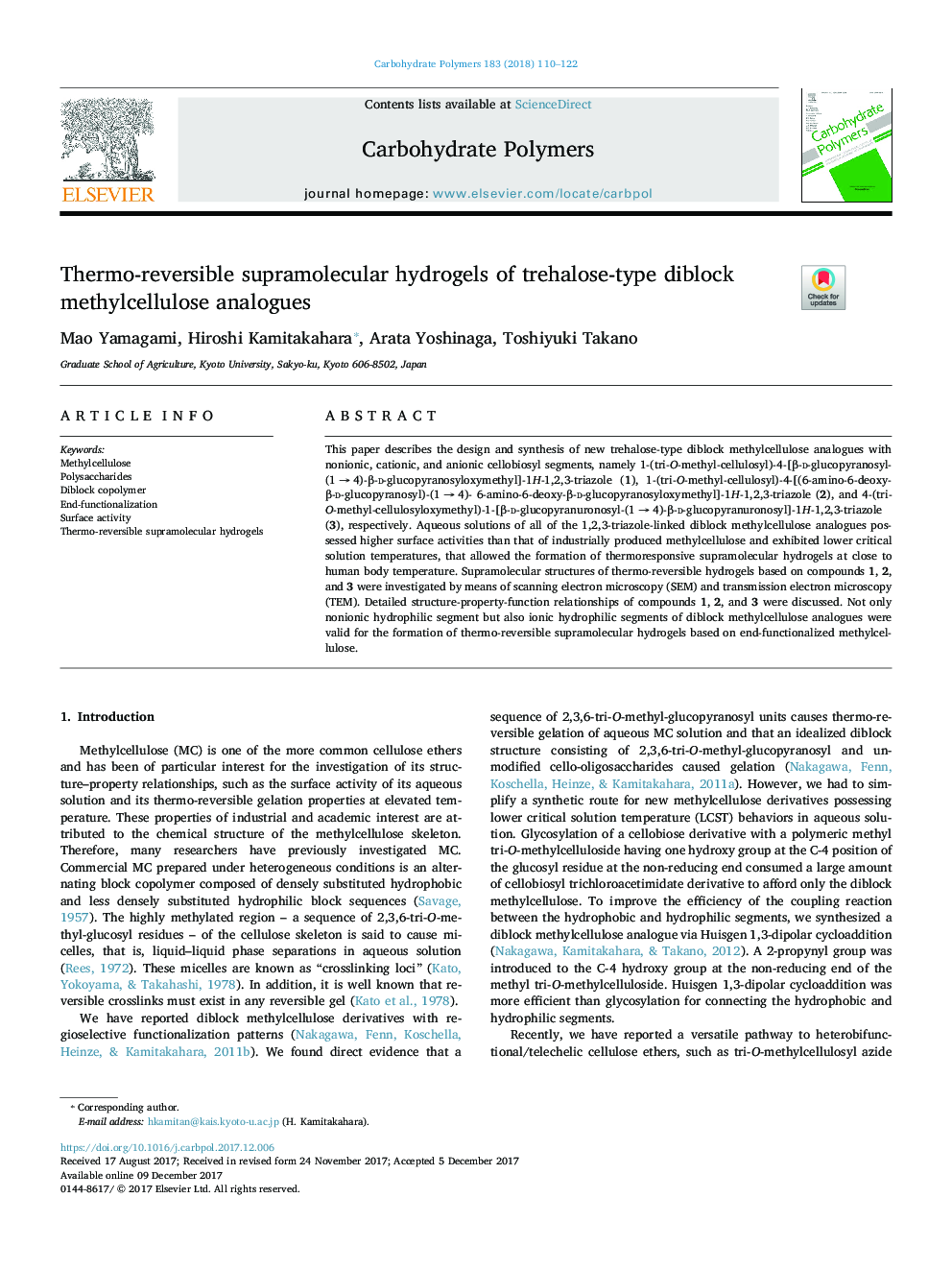| Article ID | Journal | Published Year | Pages | File Type |
|---|---|---|---|---|
| 7784111 | Carbohydrate Polymers | 2018 | 13 Pages |
Abstract
This paper describes the design and synthesis of new trehalose-type diblock methylcellulose analogues with nonionic, cationic, and anionic cellobiosyl segments, namely 1-(tri-O-methyl-cellulosyl)-4-[β-d-glucopyranosyl-(1 â 4)-β-d-glucopyranosyloxymethyl]-1H-1,2,3-triazole (1), 1-(tri-O-methyl-cellulosyl)-4-[(6-amino-6-deoxy-β-d-glucopyranosyl)-(1 â 4)- 6-amino-6-deoxy-β-d-glucopyranosyloxymethyl]-1H-1,2,3-triazole (2), and 4-(tri-O-methyl-cellulosyloxymethyl)-1-[β-d-glucopyranuronosyl-(1 â 4)-β-d-glucopyranuronosyl]-1H-1,2,3-triazole (3), respectively. Aqueous solutions of all of the 1,2,3-triazole-linked diblock methylcellulose analogues possessed higher surface activities than that of industrially produced methylcellulose and exhibited lower critical solution temperatures, that allowed the formation of thermoresponsive supramolecular hydrogels at close to human body temperature. Supramolecular structures of thermo-reversible hydrogels based on compounds 1, 2, and 3 were investigated by means of scanning electron microscopy (SEM) and transmission electron microscopy (TEM). Detailed structure-property-function relationships of compounds 1, 2, and 3 were discussed. Not only nonionic hydrophilic segment but also ionic hydrophilic segments of diblock methylcellulose analogues were valid for the formation of thermo-reversible supramolecular hydrogels based on end-functionalized methylcellulose.
Related Topics
Physical Sciences and Engineering
Chemistry
Organic Chemistry
Authors
Mao Yamagami, Hiroshi Kamitakahara, Arata Yoshinaga, Toshiyuki Takano,
